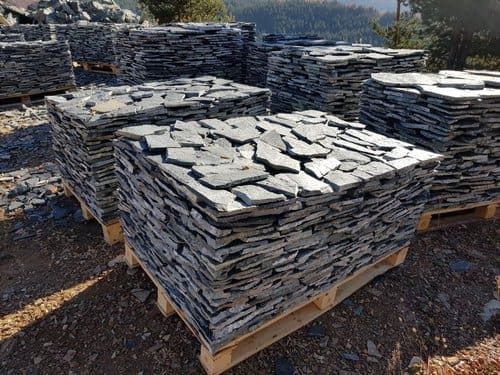What is Bluestone and What is it Used for?
Bluestone is a specific type of evenly layered sandstone that can be split into thin, smooth slabs. The term “bluestone” was coined back in the mid-1800s when the majority of the stone appeared blue or bluish-gray. Despite the name, bluestone can also be found in a range of colors including shades of green, brown, purple, dusty gray, pink, or red. New York and Pennsylvania are the only sources of commercially-produced bluestone in the United States. It is very durable, maintains its color, and is resistant to cracking under atmospheric changes, such as temperature and pressure fluctuations. Bluestone mining in New York State began in Ulster County in the mid-19th century and it has been mined ever since for use in sidewalks, building veneer, stair treads, and other construction applications.
New York’s bluestone was deposited during a time when an ancient sea covered the majority of present-day New York. Streams transported the sand-size grains that make up the stone and deposited them in a shallow sea/deltaic environment, known as the Catskill Delta. Even though the bluestone was formed in this low-lying, shallow sea environment, much of the material in the rock originated from the erosion of the former Acadian Mountains, which were located in what is now the modern-day mountain ranges of the Northeast.
Exploring bluestone is more difficult than for many types of rock where a few well-placed core holes will yield useful information. High-quality bluestone deposits tend to be limited in extent and discontinuous in nature, so it is not always cost-effective to use core holes to locate new deposits.

